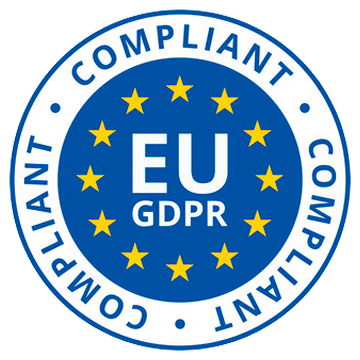Starting a business requires an entrepreneur with an excellent vision, but it takes serious collaboration skills and team effort to succeed. Leadership comes in as a key ingredient that drives the collaborative process.
People now prefer companies with leaders who foster a positive work culture to those offering the best designation or perks. A positive workstation culture is a combination of effective teams with solid collaborative skills.
While operating effectively as an organized team is incredibly beneficial for quality, output, retention, and morale, progressing a business is challenging without excellent teamwork. It’s also clear from the facts. According to a recent report, about 80% of companies leverage social collaboration tools to enhance business processes.
So what are collaboration skills, why do they matter, and how do you successfully implement them in your organization? This detailed piece has all the guidelines to create a collaborative culture and enjoy its immense business benefits.
What are collaboration skills?
Also referred to as teamwork, interpersonal or soft skills, collaborative definition entails the skills that allow a person to work well with others. Every workstation requires collaboration; hence the skills are essential. Teamwork skills include managing priorities, understanding perspectives, and meeting goals as a reliable team member.
Successful staff collaboration calls for mutual respect and a cooperative spirit. That’s why the hiring team considers workers who can function effectively in a team and can balance group goals with personal achievement.
The concept of collaboration may seem easy, but in reality, it comes with its challenges. Each worker within your organization has unique strengths and weaknesses, personal goals, and communication preferences. Company culture also influences collaboration.
But despite the hurdles, it’s still possible to implement collaboration skills in your organizations.
What skills are needed for collaboration?
Successful team collaboration requires a combination of several crucial skills. For instance; skilled communication, respect for diversity, and emotional intelligence. Let’s explore the collaboration skills examples in each category.
Skilled communication
Getting your point across isn’t as cut and dry. In a team setup, you may share your viewpoint confidently, but you can never impose your perspective on the rest of the team members.
The following communication skills are crucial for effective communication:
- Active listening – This isn’t just listening to your colleagues’ words, but listening to understand what they’re saying without judgment and seeking clarification when you don’t understand.
- Verbal communication – Your message is critical, but how you convey it in a team environment is essential. Verbal communication skills let you share your views succinctly and disagree respectfully.
- Nonverbal communication – Skills like language use and tonal variation impact your verbal message. You must consider the message you’re passing to colleagues and how you’re doing it.
- Written communication – Lots of collaboration is in writing that conveys meaning through nonverbal cues. So you must have the skills to communicate well in writing.
Collaboration skills and emotional intelligence
This highly sought-after workplace soft skill involves identifying and handling your emotions, recognizing other people’s feelings and reacting appropriately, and applying your emotions to office tasks.
When an employee is moody and snaps at their colleague, an emotionally intelligent person can ascertain that the irritability could indicate that the person requires assistance or rest. Issues like stubbornness and laziness could signify a more significant problem requiring everyone’s involvement and effort.
These crucial traits can cultivate your emotional intelligence:
- Resilience
- Compassion
- Difficulty getting offended
- Curiosity
- Conflict resolution
- Empathy
- Not taking criticism personally
- Ability to recognize and detach from extreme emotions where necessary
Respect for diversity
In today’s global economy, it’s common to find teams with members from other cultures and nations. You must also call attention to decisions or behaviors that could be subtle forms of discrimination.
Respect for diversity in a collaborative work environment requires the following:
- Open communication
- Sensitivity to religious and ethnic backgrounds
- Creating and managing expectations
- Facilitating group discussions
- Eliciting every team member’s viewpoints
- Agreeing on duties that rely on individual capabilities
- Building consensus
Common collaboration skills roadblocks
Companies face the following challenges as they work to implement a collaborative workspace:
- Lack of team communication – When teams fail to communicate, their collaboration abilities diminish.
- Unclear objectives – Poorly defined goals will make it difficult for team members to collaborate effectively. Lack of clear targets makes it harder to establish a clear roadmap.
- Conflicting management styles – When leaders have leadership styles that don’t fit well with a team or members, it could cause friction or resentment.
- Inadequate resources – With soft skills, you still require several resources and tools to develop workplace teamwork and achieve common goals. These may include website builders, project management solutions, or a detailed project brief.
PracticaltTips to improve collaboration skills
After understanding how collaboration skills work, it’ll be time to work on a comprehensive strategy to improve your workplace collaboration skills. Pay attention to the following tips to achieve the best results:
Set clear company vision and goals
Unclear goals are among the leading limiting factors to company and team collaboration. Fortunately, you can fix this by doing the exact opposite.
Begin with defining your objectives for each project and year, then create SMART goals to ensure everyone works towards the crucial metrics you wish to track.
It’s helpful to familiarize yourself with your worker’s career objectives. When you know what the different team members want to achieve professionally, you can align these ambitions with the company’s objectives. This way, your business will grow as you help employees progress as well.
Focus on people’s strengths
As a team leader, you understand that people differ. Therefore, always acknowledge your workers’ strengths and differences. For instance, when running a remote team composed of global talent, you’ll have a diverse team with each member bringing unique insights, skills, and perspectives to the table.
A collaborative culture requires you to highlight every team member’s strength when assigning projects and roles. This will keep them motivated to use their unique capabilities to aid the entire group’s objectives. Consider consulting with each worker to know where they feel they’ll offer the most outstanding contribution before any new initiative.
Create clear expectations
A vital element of effective workplace collaboration is ensuring all team members understand what the company expects them to deliver, individually and as a team. This should happen at the beginning of a fiscal year, a new initiative, or a new project.
You may discuss all the details with team members during a general meeting. If you have people working remotely, go to an online conference or meeting to ensure everyone knows the new goals, projects, and company changes.
Part of this involves seeing their views and questions on any areas that are unclear. Before such meetings, ensure you have a plan.
Nurture transparency
Workers must trust each other to achieve the ultimate workplace collaboration. Fostering transparency is among the simplest ways of building trust.
First, be transparent about the current state of your company or team. Apart from your goals and targets, this also means clarifying any setbacks that might affect how your teams operate.
Also, be honest when you can’t find the correct answer to complex inquiries. Acting like you know something yet you don’t or avoiding hard questions may give the impression of distrust or secrecy, tanking trust between you and other employees.
Clarify individual and team roles
From the moment you hire or onboard a new team member in your organization, the person must understand what their job descriptions entail. This is how to teach collaboration skills from day one.
Creating boundaries between responsibilities and work deliverables can keep staff on board and ease turnovers. After all, no one wishes to immediately begin handling the tasks they didn’t sign up for.
Of course, this differs from letting workers take on more duties. The latter should ensure they’re willing and able to address various tasks or projects that aren’t currently in their job descriptions, especially as a method of progressing their careers.
Get the right software and tools
Your teams need role-specific tools and software that allow them to focus on vital aspects of their jobs. Several popular communication tools can enhance workplace collaboration. But you also need the specialized ones that prioritize teamwork. For instance, project management tools are perfect if you need a top-down view of initiatives and projects.
With the right collaboration software and tools, your staff will be at the forefront in ensuring you achieve a collaboration culture.
Build a communication culture
As you already know, it’s almost impossible to achieve a collaborative team without effective communication. Your priority should be ensuring all communication channels are open, including during in-person meetings and online communication tools.
Establishing this communication culture requires encouraging members to hold conversations, share views during brainstorming sessions, and speak up without fear.
This is arguably the most straightforward approach to establishing a collaborative workforce. While most leaders understand this, there are always gaps in the actual implementation.
Conduct team building retreats regularly
Sometimes, a little extra assistance can hasten how you implement collaboration skills among your workers. Regular team-building endeavors can be an excellent investment, especially if new workers are starting to mesh with the rest of the team. It’s also helpful to your company’s established teams.
During these retreats, different members must try to understand each other deeply. Be sure to include organized exercises that highlight different individuals’ leadership and problem-solving skills.
These are the primary elements for successful team-building:
- Introductory activities for knowing each other
- Games that test group analytical and problem-solving skills
- Group discussions highlighting what everyone has learned from the exercises and activities to practice team sharing and synthesize learning
Automation works
Most workers feel unmotivated and unproductive if a more significant chunk of their workday involves recurring administrative tasks. When an employee isn’t engaged at work, it’ll be challenging to contribute to the team. You can easily bridge this gap by investing in software and tools that automate repetitive tasks. This will allow your staff to take care of the tasks and projects that matter.
Encourage after-work socialization
Encouraging socialization and personal relationships among colleagues makes them treat each other as real friends. This can substantially aid collaboration since the employees will understand their colleagues’ lives and personal goals.
Threat this with the utmost care, avoiding forcing staff into social events and sharing personal details they’re unwilling to share.
When workmates socialize, they might share their everyday stress, and their colleagues will help them through it.
Treat errors as feedback
Mistakes and failures can hugely limit collaboration not because they’re errors but how you handle them. Harsh criticism doesn’t attract a positive response. Instead, treat these reports as feedback.
If goals are unmet or a project fail, always meet your team members and find genuine answers to the following questions:
- What caused the setback?
- How can we move on to achieve our objective next time?
- What should we do to meet the objective next time?
When tackling these questions, avoid anything that would suggest that you’re assigning blame. Your staff must understand that you only focus on what everybody can learn from the situation when talking about failures.
Celebrate wins and milestones
Celebrating small and big wins and milestones can significantly boost team morale. Team members will be happier when leaders acknowledge their efforts, and leaders don’t lose anything when they express their appreciation and gratitude.
To implement this, begin with congratulating specific groups or individuals for hitting any targets. Consider sending a mass message, so the entire organization gets the good news.
Boost collaboration through seamless sharing
The flow of data within your organization is crucial in the establishment and maintenance of a collaborative workforce. One efficient and effortless way to enhance this vital component of your communication strategy is by empowering your team with Sizle, a simple, secure, and fast document collaboration solution.
Sizle gives your team delightful document-sharing experiences that inspire informed decisions. You’ll benefit from:
- Secure document workspaces where you’ll drag and drop files accurately and fast.
- Markup and drafting through robust annotating and markup online tools.
- Safe and fast document sharing with the right people
Turn docs into deal intelligence
Sizle shows what really happens after you hit send.
Free 7-day trial
Unlock insights instantly
Join 30,000+ professionals



